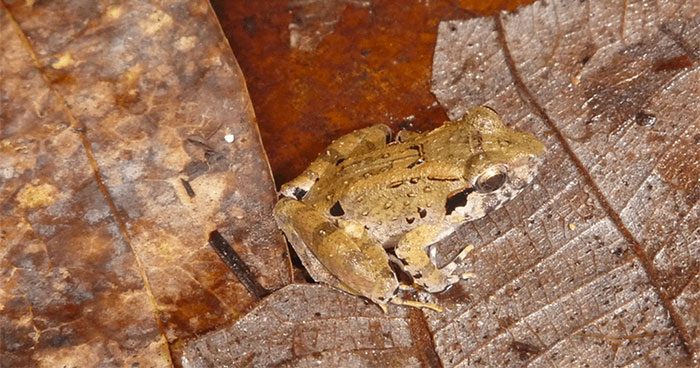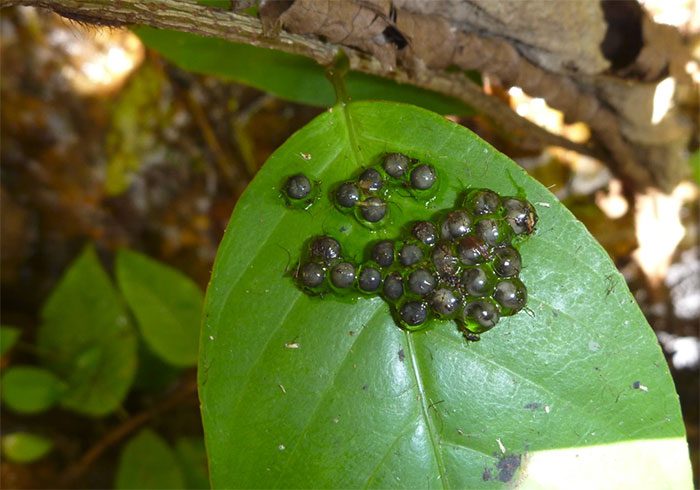This species weighs almost as much as a coin; their calls resemble a series of sounds similar to a computer mouse click.
Frogs are known for various characteristics, but their teeth are certainly not one of them. In fact, most frogs hardly possess any teeth at all.

The call of this frog species is a series of short sounds resembling a computer mouse click (Photo: Sean Reilly).
However, one genus of frogs, containing around 70 species, possesses fangs. As they move throughout Southeast Asia, they use their jaws to fight against other frogs and can even bite down on a crab or a giant centipede with their fangs.
Now, scientists have discovered another new fang-bearing frog species that may be the smallest frog in the world.
Jeff Frederick, a researcher at the Field Museum in Chicago, USA, stated in a statement to IFLScience: “This new frog species is very small compared to other fang-bearing species found on the island where it was discovered.”
“Many frog species in this genus are quite large, weighing up to 2 pounds. However, this new species weighs about the same as a coin,” the researcher added.
This new frog species has a body length of about 3 cm, making it the smallest adult-sized fang-bearing frog among the species found on the island where it was discovered.
These frogs were found at three locations on Sulawesi Island in Indonesia, and their eggs revealed their existence. This species lays eggs on leaf surfaces and mossy rocks, which is why it has been named Limnonectes phyllofolia, with “phyllofolia” derived from Greek meaning “leaf” and “nest.”
After some time, the research team began to see tiny frogs beside the eggs. Frederick explained: “Typically, when we search for frogs, we look along the edges of streams or wade into the water to spot them directly. However, after several observations, we started to find frogs sitting on leaves, embracing their little nests.”
Upon closer inspection, the research team discovered that all the frogs guarding the nests were male and were located at a height of 1-2 meters above small, steep streams.
Researcher Frederick noted: “The behavior of males protecting eggs is not completely unknown in frogs, but it is quite rare.”

The male frog protects eggs that are approximately 5mm in diameter. When the eggs hatch, the tadpoles will fall into the stream below. (Photo: Sean Reilly).
The research team believes that this frog is a new species due to several distinct characteristics, including egg protection behavior and the small body size.
Additionally, the call of this species is also very distinctive, consisting of a series of quick “click” sounds, similar to a computer mouse. They also have a reduced webbing between their toes compared to other species in the genus.
The research team also suggests that besides the aforementioned frog, many other frog species currently living on Sulawesi Island have not yet been officially named by science. They propose that more field research is needed to fully identify all these species and aid in conserving their habitats.
“Our discovery also highlights the importance of conserving these very unique tropical habitats. Most of the animals living in places like Sulawesi are quite unique, and habitat destruction is a persistent issue in preserving the biodiversity of the species that exist there. Learning about animals like these frogs, which are not found anywhere else on Earth, helps lay the groundwork for protecting these valuable ecosystems,” Frederick concluded.


















































